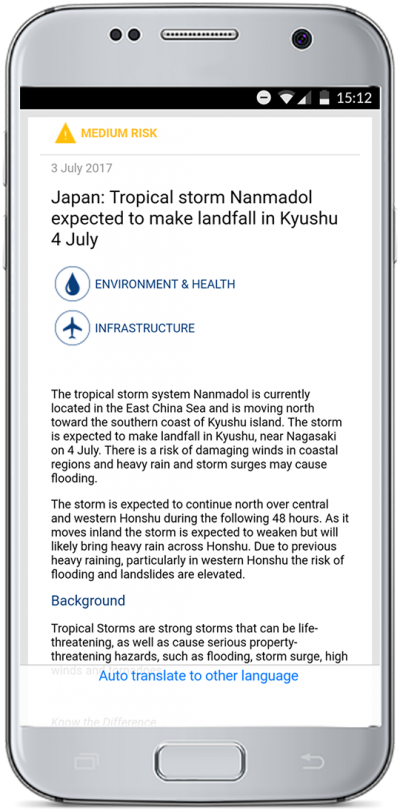
In early July, Southern Japan experienced one of its deadliest natural disasters when large swathes of the region were hit by flooding and landslides. While it is not unusual for Japan to experience such calamity during the typhoon season, the scale of damage brought upon by the adverse weather was so immense that it did not only cause disruptions to travelers but also forced the country’s Prime Minister Shinzo Abe to cut short his visit in Europe to deal with the disaster.
The initial phase of the calamity was marked with the arrival of Typhoon Nanmadol that lashed through Kyushu and Kanto regions, including in major cities such as Nagasaki, Fukuoka and Asakura. The typhoon left a trail of destruction as it landed by damaging houses as well as knocking down power lines. More than 20,000 people were also evacuated while flights at the region’s main airports were suspended, leaving thousands of travelers stranded. Apart from air transportation chaos, rail and road transportation was also affected where train lines including high-speed trains were suspended and highways closed due to danger of mudslides.

In the week that followed, heavy rain continued to pound the region and left at least 28 people dead while dozens more were still categorized as missing. Besides the human cost, the disaster also brought the public’s attention to the role of driftwood that was thought to have accelerated the damage caused by the mudslides, which eventually hampered rescue efforts in affected areas. The Japanese government said it will set up a task force to remove the driftwood as soon as possible so that relief goods can reach those in need quicker.
During this period, SAFEY continued to send out alerts to its users by highlighting the areas that have been badly affected so that they could plan their journey in advance. Five alerts had been sent out.
Since the beginning of the calamity and in general, GWS has the following advice when it comes to dealing with adverse weather conditions:
- Move immediately to higher ground if there is a sign of flash flooding. Do not wait for instructions to move.
- Be aware of stream, drainage channels, canyons and other areas prone to flash flooding, which can with or without typical warnings such as rain clouds or heavy rain.
- Do not walk through moving water. Use a stick to check the firmness of the ground in front of you.
- Do not drive into flooded areas.
As a security alert provider, SAFEY will continuously provide updates to its users about weather-related events especially during the ongoing typhoon season in Japan.
